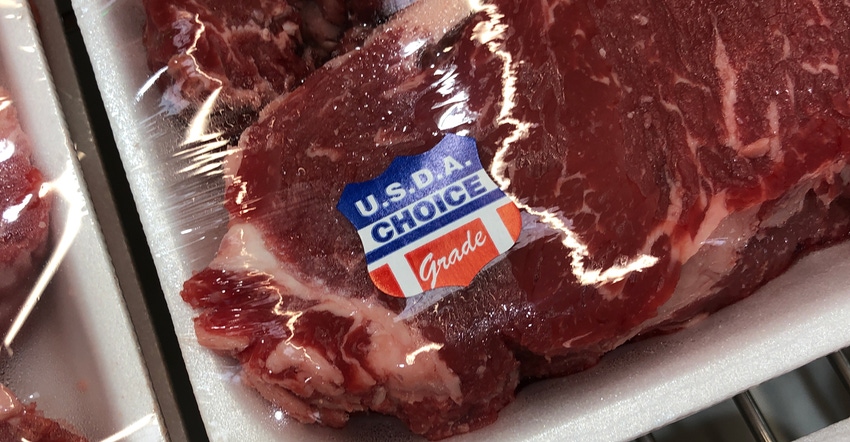
Why is it that a beef steak at a food-chain restaurant tastes different than one at a high-end restaurant? It could be because of the quality grade purchased by the owner.
In the marketplace, there is greater value for higher-quality grades of beef. Too often, consumers don’t understand the difference, but they are not alone. Jason Morris finds beef producers can get quality and yield grade mixed up, resulting in unrealized gains.
Morris, a University of Missouri Extension ag business specialist, says the terminology of quality grade and yield grade are often used interchangeably to describe cattle, but in fact they differentiate the two carcass traits.
“Beef producers, and those thinking of entering value-added beef enterprises, need to recognize the difference and how each is utilized in the cattle industry,” he explains in a recent AgConnection newsletter. “Knowledge of how quality and yield grades are applied may increase profitability.”
Know your quality grade
When it comes to quality grade, it is all about the eating experience of beef. According to USDA, quality grades are based on two main criteria: the degree of marbling or intramuscular fat in the beef, and the maturity or estimated age of the animal at slaughter.
There are eight total quality grades: Prime, Choice, Select, Standard, Commercial, Utility, Cutter and Canner. They have been used by the beef industry since 1927.
The first three quality grades — Prime, Choice and Select — are the most commonly recognized by consumers and are considered food-grade labels by USDA.
The USDA Agricultural Marketing Service offers the following definitions of all eight grades for both beef producers and consumers.
Prime. Prime beef is produced from young, well-fed beef cattle. It has abundant marbling and is generally sold in restaurants and hotels.
Choice. Choice beef is high quality, but it has less marbling than Prime.
Select. Select beef is very uniform in quality and normally leaner than higher grades. It is fairly tender, but because it has less marbling, it may lack some of the juiciness and flavor of the higher grades.
Standard and Commercial. These grades of beef are frequently sold as ungraded or as store-brand meat.
Utility, Cutter and Canner. These grades of beef are seldom, if ever, sold at retail. Instead, they are used to make ground beef and processed products such as canned soup or frozen meals.
Determine beef yield grade
“Through yield grades, individual animal value is determined, and thus profitability is impacted,” Morris says. “Producers can utilize these USDA yield grades to market their cattle.”
Yield grade is an estimate of the percent retail yield of the four primal cuts of beef, including the chuck, rib, loin and round. Morris shares how the following traits are used to determine yield grade:
Backfat thickness (BF). When determining carcass yield, back fat carries the most influence. A USDA grader will determine the total thickness of fat based on the total fat of the carcass.
Rib-eye area (REA). The rib-eye area consists of muscle situated between the 12th and 13th ribs. This area is noted in square inches and typically measures between 11 and 15 square inches.
Kidney, pelvic and heart fat (KPH). The estimated percentage of kidney, pelvic and heart fat is the internal fat around these organs. Typically, most carcasses host anywhere from 1.5% to 4%.
Hot carcass weight (HCW). The hot carcass weight consists of an uncooled carcass minus the hide, head and all internal organs. In most fed cattle, this dressing percentage will be about 63% of the live cattle weight.

After assessment, the yield grade is determined and given a USDA yield grade from 1 to 5. A yield grade of 1 offers the largest amount of beef, whereas a yield grade of 5 offers the least.
“Producers who understand yield and quality grades are better equipped to make decisions about genetics, nutrition, health and production practices, as well as product marketing,” Morris concludes.
University of Missouri Extension contributed to this article.
About the Author(s)
You May Also Like






